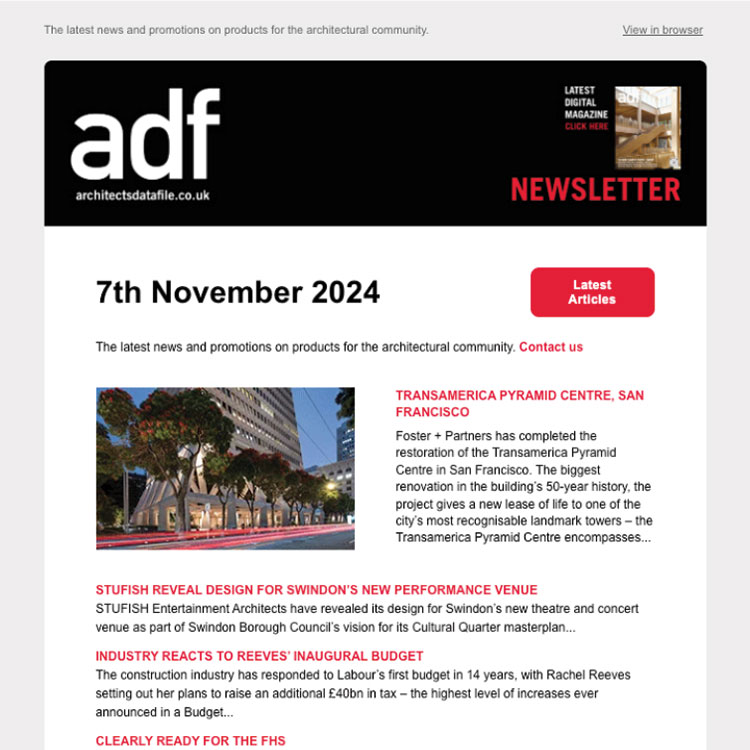Stephen Anderson of CMS Window Systems discusses what he sees as the bright future for unitised aluminium systems in sustainable facade design and build.
The speed at which the building sector has adopted modern methods of construction (MMC) has been restrained because many promising solutions have not demonstrated clear enough benefits to outweigh the risks of change.
Some new approaches have however shown how it is possible to build better and address newly emerging challenges in line with the changing environmental and social landscape. Nowhere is this more evident than in the way we design and build facades, with unitised aluminium curtain walling increasingly providing the answer to meet sustainability, quality and project efficiency goals.
Today’s advanced thermally broken aluminium systems have proved themselves in helping architects deliver top performing, sustainable buildings. Materially, aluminium systems are not only efficient to fabricate and install but deliver superb aesthetic results. Lightweight and highly workable, aluminium can be recycled infinitely without noticeable loss in quality.
Unitised aluminium systems are the latest evolution and in many instances are better suited to the challenges of today’s European construction sector, accommodating pressures of build schedules, quality and coping with labour and skills shortages. With stick systems, the bulk of the curtain wall frame construction is undertaken on site. Installers fix the mullions and transoms supporting glass, spandrel panels, metal panels and brise soleils, with each mullion normally supported by the floor or perimeter beams. Generally 70 per cent of the work is done on site, with 30 per cent in the factory environment.
Unitised systems are manufactured in a factory and delivered to site as finished modular products ready-made for installation. Being factory-made means greater quality control and consistency; reducing the risk of poor on-site fabrication which can result in serious problems in later years. It is the reverse of stick systems in terms of labour requirements, with 70 per cent of the work in the factory and 30 per cent on site.
And with the BIM era promising better quality buildings through easier access to accurate technical and performance data, unitised aluminium systems represent a more predictable solution for increased client assurance.
Quality and speed
The performance of any site-assembled curtain wall is only as good as site workmanship allows. This will be affected by variables such as weather, access, dirt and dust. This is not ideal when so many critical seals are necessary in the curtain wall, even in systems that are designed to drain or ‘weep’ rain penetration from the system back to the exterior. With unitised systems, as many critical seals as possible can be applied in controlled factory conditions, minimising this dependence on installers.
One of the key advantages of pre-fabricated products is speed of installation. It is no different for unitised curtain walling – usually all that is required is a crane for panels to be lifted into position, a process that can eliminate the need for scaffolding which is costly and time consuming to erect and dismantle.
Improving weather tightness
With the UK’s climate changing, weather tightness of buildings is more important than ever. Take rainfall – precipitation rates have increased in the UK, for example by as much as 20 per cent in parts of Scotland. This presents more frequent difficulties for installers in fitting/sealing/glazing into stick frames in inclement weather, often when they are suspended high above the ground. If the right result is not achieved in these challenging conditions, the weather tightness of the curtain wall will be compromised and could require costly remediation work in future.
Airtight buildings and sustainability
Unitised panels make an important contribution to more sustainable building. In addition to comparatively better water tightness, the enhanced quality seals on unitised systems also help improve air tightness levels. Delivering low air permeability is crucial in sustainable building design. It goes hand in hand with the benefits that innovative aluminium frame designs deliver in combination with the right glazing specification. Failure to achieve the right level of air tightness in the curtain wall will threaten the comfort, energy and CO2 emission reduction benefits that other building elements deliver.
Reach higher, design differently
Unitised aluminium systems can also enable architects to think differently about other design considerations. There is a limit as to how many storeys high a stick build facade is economically viable for. Wind and air turbulence at height means the more rigid stick built facade would need to be supported by a costly rigid central building structure. A unitised aluminium facade is more flexible and can gently sway with the air movement at height resulting in a less expensive central structure being required.
With such important advantages, we see a bright future in Europe for unitised aluminium systems as they will play an increasingly important role in sustainable facade design and build. With the right technical and specification guidance, we have no doubt that unitised systems will give architects and main contractors a credible solution to many of their current and future challenges.
Stephen Anderson is head of aluminium at CMS Window Systems


